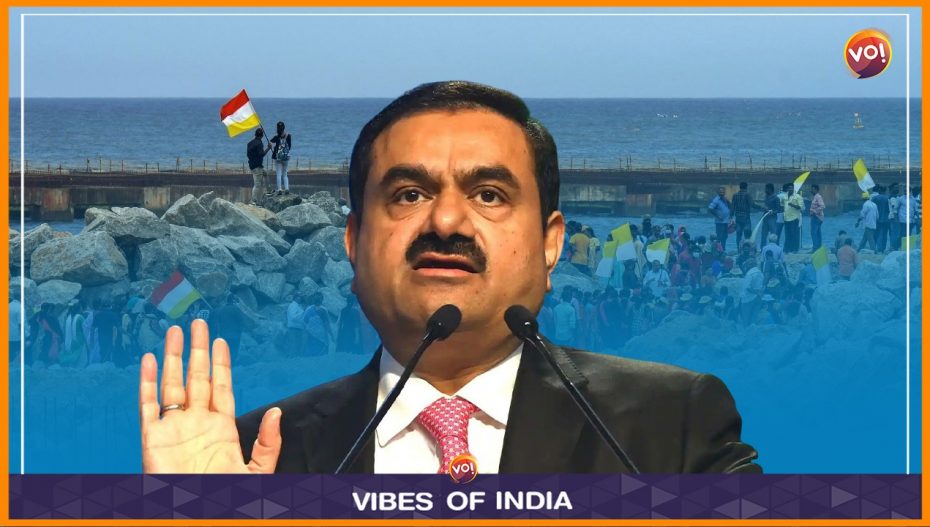More than 2,000 km from Gujarat, a tsunami of protest is taking shape in Vizhinjam in Kerala. Vizhinjam is located close to Kerala’s capital city Thiruvananthapuram, and the bone of contention is a project by Ahmedabad-based billionaire Gautam Adani.
Back in 2015, an Adani Group company called the Adani Vizhinjam Port Private Limited started constructing the Vizhinjam international transhipment deep water multipurpose seaport on a public private partnership model. The project has been delayed indefinitely due to the protest against construction of the port by the fishing community under the leadership of the Catholic archdiocese of Thiruvananthapuram.
On Sunday night, more than 3,000 people were booked by the police for violent clashes during the protest against the Adani port project. One of the people booked was Father Eugene H Pereira, vicar general, archdiocese of Thiruvananthapuram, who is among the 15 Catholic priests against whom the LDF government has filed cases for the protest.
When asked why the local fishing community and the Church were against the project, Father Pereira said, “The political parties in Kerala are trapped because all of them have accepted favours from Adani. They do not even react to our pleas and warnings. Not just our lives and livelihood, our right to live also is threatened by the port development.”
He said the fishing community is worried that the construction of a port at Vizhinjam would not just affect their lives and livelihood, it would also cause coastal erosion. “The major worry is coastal erosion because when you lose the coast, you are losing your houses and every aspect of your life. Fishermen cannot venture deep into the sea during the monsoon season in June-August, and it is the Vizhinjam fishing harbour that comes to their rescue then. This harbour was built in 1970 solely for the fishing community,” Father Pereira said.
He said the new port being developed by the Adani Group will affect the functioning of this fishing harbour. “We have already seen that it could create accidents. For the first time in history, at the mouth of the fishing harbour, huge waves lashed out, drowning fishing boats and killing five fishermen. What caused the accident was lack of sediment movement. Because of the new port, the sediment movement did not happen, and the depth of the sea in the mouth of the harbour got reduced which resulted in the accident,” he said.
The third reason for the protest, Father Pereira said, is because the sea at Vizhinjam up to 12 kilometres is very rich in biodiversity. “The incessant dredging has already affected the biodiversity of the area. A study by the former chairman of the Biodiversity Board also mentioned that dredging would destroy the unique biodiversity of the Vizhinjam sea. This, in turn, will affect the livelihood of fishermen,” he said.
“If the work on the port continues, even the airport, which is close to the sea, will be lost to the sea. In Valiyathura, a football ground is lost to the sea. We will lose many more houses, churches and other public places too soon,” Father Pereira said.
Also Read: Bring Our Kin Back From Pak Jails And We Will Vote For You: Guj Fisherfolk To Netas












